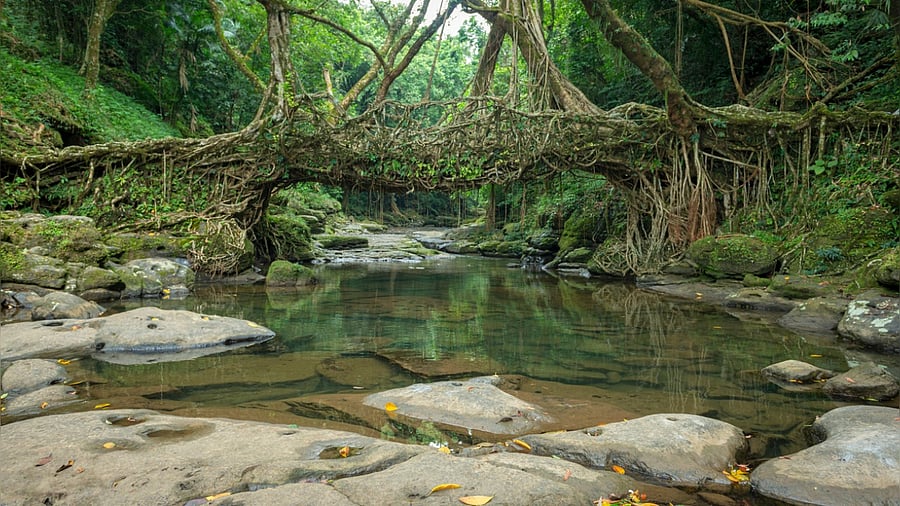Meghalaya government eyes UNESCO Heritage site status for living root bridgesThe local tribal communities of Meghalaya have been preserving the Jingkieng Jris
Last Updated IST

Jingkieng Jris of Meghalaya. Credit: iStock Photo
Meghalaya government is trying for the coveted Unesco World Heritage Site status for the Living Roots Bridges or the Jingkieng Jris, as they are locally called for better conservation and sustainable use for tourism purposes.
Seeking help of scientists at a national convention for science-based conservation of the living roots bridges, Chief Minister Conrad K Sangma said, "if the Living Root bridges of Meghalaya receive the UNESCO World Heritage Site tag, it would be more about the larger message that we would be giving to the world that the Living Root Bridge is an ecosystem in itself, supporting many birds, animals, lichen, mushrooms, flowers, trees, serving its simple purpose while allowing the humans to cross over them for their living. The process of making these bridges is an age-old craft, a very much living and alive tradition among the locals in the present age. It is crucial to archive this age-old wisdom of not only making, but more so, conserving the bridges and the related ecosystem."
Sangma said this in a National Convention on Community and Science based Conservation Research and Development of Jingkieng Jri or Living Root Bridges, in Shillong on Tuesday.
The Living Roots Bridges not only acts as a bridge for the people living in the forest areas to cross the water bodies, streams and rivers but also is an attraction for tourists visiting Meghalaya, a state where tourism is the second biggest job provider after agriculture.
The local tribal communities of Meghalaya have been preserving these Jingkieng Jris as per a customary practice of preserving the sacred groves known as 'Law Kyntang'. These forests also possess a huge resource of medicinal plants and herbs. There lies a dire need for the larger world to go back to its roots and respect nature once again, Sangma said.
"The Jingkieng Jris or the Living Root Bridges are trailblazers that not only highlight the symbiotic relationship between nature and human culture to a global audience, but more so, it focuses on the need to adopt a balanced approach between economy and ecology, something which the state government has been working tirelessly in the past few years, he said. The government have been extensively working towards natural resource management where we are focusing on creation of livelihood out of the natural resources that we possess, so we use them in a sustained manner and yet create a parallel economy with more inclusive forms of livelihood, while keeping the ecology at the forefront”, Sangma said.
The national convention was attended by K Vijay Raghavan, the Principal Scientific Advisor to Government of India, several other scientists, community representatives and members of the Living Root Bridge (Jingkieng Jri) Co operative Societies from across the Khasi and Jaintia Hills in Meghalaya. Each of them shared the initiatives being taken by their respective cooperative societies towards preserving the Jingkieng Jris but also preserving the biodiversity (flora and fauna) in and around each Living Root Bridge in their respective villages.
The scientists, who spoke at the convention stressed that the living root bridges are a house of several critically endangered species of flora and fauna and therefore are definitely a reason to be considered as a UNESCO World Heritage site.
Watch the latest DH videos:
